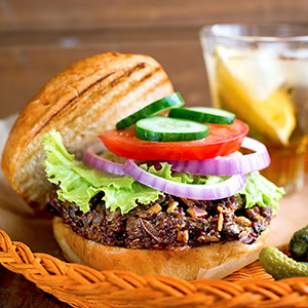
You are what you eat. It is an old adage, but one that more and more people are realizing the truth behind. The standard, modern Western diet is not kind to human health in many ways, and obesity levels and the number of people suffering from chronic, diet related illnesses such as Type II diabetes is at an all time high.
In the pursuit of this goal, researchers are discovering that certain foods offer greater benefits than others, superfoods if you like. One of the most versatile, but lesser known, is called quinoa, and quinoa nutrition facts are pretty impressive.
What is Quinoa?
Contrary to popular belief quinoa – which is pronounced ‘keen-wah’ – is not a really a grain – although it is often classified as one – and neither is it a grass. It is, in fact, a seed that comes from a family of green plants called Chenopodium, which some people also know as goosefoot.
The quinoa plant has a fascinating history as a foodstuff. It was first cultivated as a crop thousands of years ago, by the Andean people. It quickly became a staple of their diet, even though it was not found in many other places in the world.
The Incas even considered quinoa to be a scared crop, dubbing it chisaya mama, which means ‘the mother of all grains’. It was traditional for the Incan emperor to perform a ceremonial planting of quinoa seeds on an annual basis, using gold implements and amid a lot of pomp and ceremony. When the Spanish conquered South America they outlawed this, made quinoa an illegal crop, and forced the Incas to grow wheat instead. Even when they lifted the ban, the Spanish refused to eat quinoa, dismissing it as ‘food for the Indians’.

Why is Quinoa Considered a ‘Superfood’
The term ‘superfood’ is not really a formal scientific term, but it is generally used these days to describe an ingredient that offers higher than average positive nutritional benefits. Quinoa is one of these foods.
The real difference that quinoa offers is that, unlike most other grains, it contains lysine, a naturally occurring amino acid. This technically makes this clever little grain a complete protein, and it offers protein at levels that can be compared to whole milk.
That is far from all that quinoa has to offer though. It is an excellent source of dietary fiber, something that is essential for great digestive health, and it can, in a single serving, provide the recommended daily doses of niacin, thiamin, riboflavin, vitamin B6 and potassium. If all of that were not enough to qualify quinoa as a super food, it is also an excellent natural source magnesium, copper, zinc and folate.
Cooking with Quinoa
Of course quinoa is far from the only food that offers at least some of the same nutrients that are so beneficial and they can all be found, although not always together, in other food sources. There are also some other foods that offer some of the same health benefits. So why should you consider adding this more unusual option to your diet on a regular basis, other than the great quinoa nutrition facts?
Quinoa’s versatility, as well as its nutty taste, is certainly a large part of its great appeal. It can be incorporated into a meal at any time of the day, often as a meat substitute, prepared in a great many different ways. It can be used by vegetarians in the same way as soy, and makes an especially great burger. Or, you can eat it alone, as a healthy alternative to junk food snacks.
Quinoa is also easy to prepare. For example, quinoa is becoming a popular substitute for brown rice. Brown rice is delicious and also quite healthful ,but to prepare it properly it can take 45 minutes, a major inconvenience for busy people (and who isn’t busy)? While the same amount quinoa can be fully cooked in a mere fifteen minutes.
For those trying to lose weight, quinoa can be a helpful diet tool. It is rather filling but is relatively low in fat and calories. A one cup serving of cooked quinoa contains 222 calories and 3.4 grams of fat. To put that latter figure into prospective consider the fact than the same one cup of lean ground beef contains 33 grams of fat. This is just one of the many reasons that people often use quinoa as a meat substitute.
Finally, as it is not really a grain at all, quinoa is gluten free. A gluten free diet can be an incredibly boring one, but the addition of quinoa into that rather restrictive diet can bring a great deal of taste and variety back into the everyday meals consumed by those with a sensitivity to gluten.








